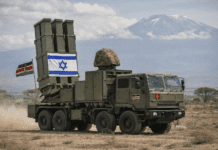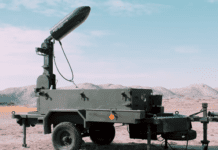This post is also available in:
 עברית (Hebrew)
עברית (Hebrew)
07Miniature autonomous drones will navigate and map unexplored subterranean environments beneath the UK’s rail network. The Prometheus project is designed to provide solutions across industries where underground exploration in harsh conditions is crucial.
The developers want to put a circular robot drone down a tiny 150mm [diameter] borehole next to a railway track. There are thousands of mines and voids under the tracks and they are interconnected – and there is no information regarding what is beyond the line of sight.
The aim is for the drone to fold and squeeze through the small holes and travel far enough to reach unexplored caves and gather data. Several live trials were already completed.
“If we’re able to get the technology to a stage where the drone is small enough and it can operate for long enough and inspect utility pipelines and other types of infrastructure, that’s really exciting because it takes it beyond how it affects the railway networks and to how it could affect any underground infrastructure,” said Headlight AI co-founder Dr Jameel Marafie. “It’s a major challenge but that’s why we’re doing it, because it just opens up so many applications.”
According to theengineer.co.uk, the £2.2m project, funded by Innovate UK, is a collaboration between several organizations and companies: Headlight AI have been working on the 3D sensing aspect, developing a scanner called ‘Dragonfly’ which uses LiDAR to provide 3D images with a 360o surround view. Manchester University is working on the design of the drone itself alongside specialist drone manufacturers Calla-Lenz, whilst Royal Holloway is exploring the AI planning side of the project, working on how the robot will autonomously navigate the spaces. Thales is working closely with Headlight AI on the sensors.
The ‘Dragonfly’ scanner combines multiple miniaturized sensors with integrated software, allowing users to access the data it gathers through web-based apps.
The drone’s weight will not surpass 150-180g and it will not consume a lot of power.
Flight time will be one of the biggest challenges faced by the battery-powered drone.
Dr Tracey Skivington, electro-optics consultant at Thales UK added that the project can “operate in a GPS-denied environment and beyond visual line of sight. It could have important applications for our market in security.”

























